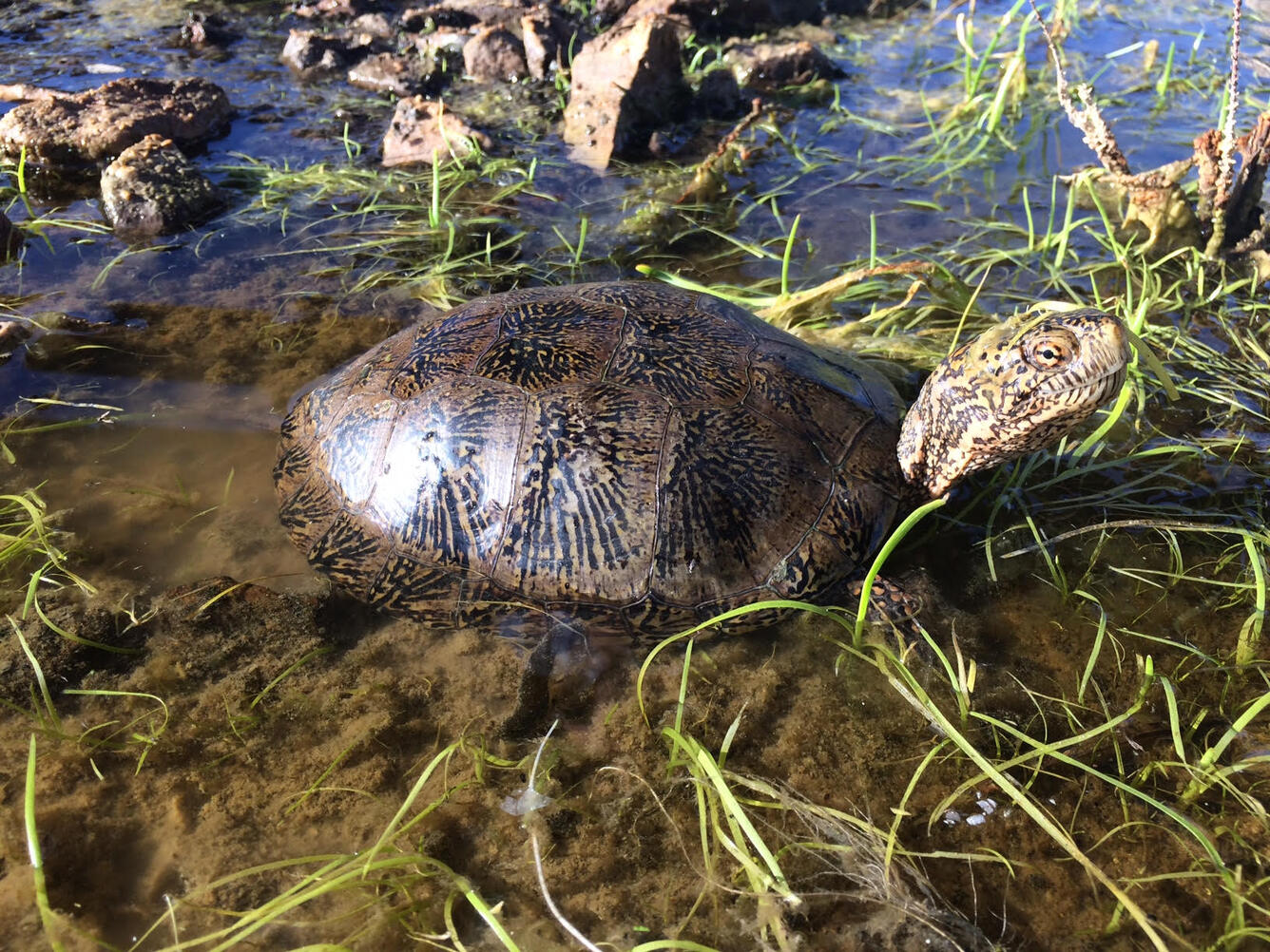Searching to Study the Remaining Few
Scientists find an extremely rare western pond turtle
An extremely rare Mojave River western pond turtle was recently observed by U.S. Geological Survey scientists and staff from The Living Desert Zoo and Gardens in the Mojave Desert. Turtles of this population have rarely been seen since the late 1990s.
The U.S. Fish and Wildlife Service is considering the need for protections for the western pond turtle under the Endangered Species Act. In the 1990s, fewer than 50 western pond turtles, a Species of Special Concern in California, were found in the lower Mojave River. Since then, The Living Desert, the Bureau of Land Management and California Department of Fish and Wildlife have funded concentrated efforts to find turtles in the same area. These surveying missions were unsuccessful until 2016 when one hatchling was found by a student, and then again earlier this month when an adult female was captured. Both turtles were photographed and released.
“It’s possible that we observed two of the last survivors of a population that has existed in the Mojave Desert area since the last Ice Age,” said USGS scientist and turtle expert Jeffrey Lovich. “While it is possible that more persist in this isolated wetland, the numbers must be very low.
Although turtles are common in some places and familiar to almost everyone, they are now the most endangered major group of animals with backbones on earth. These iconic animals outlived the dinosaurs and retained essentially the same shape and form for millions of years. Now, about 60 percent of all turtle species are extinct or threatened to some degree. Threats faced by turtles include habitat destruction, overexploitation as food or pets, pollution, climate change and other factors.
"The Living Desert is proud to participate in these important studies and discoveries," said Peter Siminski, Director of Conservation at The Living Desert. "The preservation of these outlier populations is important to protecting the genetic diversity of the species."
USGS crews spend weeks in the field, sometimes hoping to find even one turtle. Scientists research various species including Agassiz's desert tortoises, diamond-backed terrapins, map turtles and others.
“Finding and understanding these dwindling populations is vital in helping resource managers more effectively conserve these important species,” said Lovich.
Recently, some turtle species vanished completely. The last male Pinta Island tortoise in the Galapagos Islands of Ecuador died in June of 2012. "Lonesome George" never found a mate before slipping into the shadows of extinction. Others like the Yangtze giant softshell turtle in Vietnam and China have been reduced to only three living specimens. One is a female that has been producing infertile eggs for several years despite international efforts to try and help save the species through artificial insemination and other applications of medical technology. Many other turtles have experienced population reductions resulting in their listing as protected species, including some in the United States.
There are currently 335 species of turtles found on all continents except for Antarctica. Although turtles as a rule tend to live in warm areas with lots of water, there are several species that have adapted to life in deserts.
As shown by Lonesome George, even iconic species can slip away into extinction. A world without turtles would be a very lonely place.
About The Living Desert:
The Living Desert Zoo and Gardens is an AZA-accredited zoo and gardens that is dedicated to desert conservation through preservation, education and appreciation. It is a family-friendly place to explore nature and create meaningful experiences for guests that are remembered for a lifetime.
Get Our News
These items are in the RSS feed format (Really Simple Syndication) based on categories such as topics, locations, and more. You can install and RSS reader browser extension, software, or use a third-party service to receive immediate news updates depending on the feed that you have added. If you click the feed links below, they may look strange because they are simply XML code. An RSS reader can easily read this code and push out a notification to you when something new is posted to our site.





